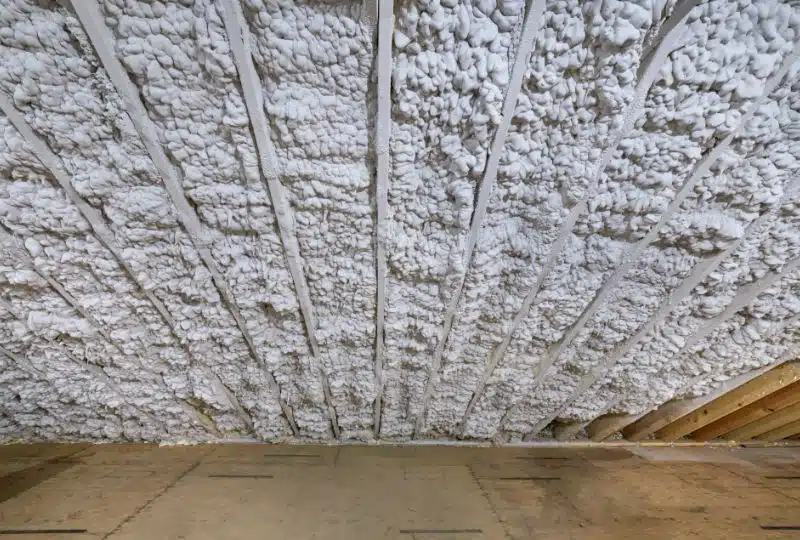
Homeowners and contractors know there are plenty of insulation types on the market. But it’s difficult to know which type is best for your home.
This blog will focus on spray foam insulation, which has two types: open-cell and closed-cell. Explore open-cell versus closed-cell foam insulation and which is better below.
You’ll hear spray foam insulation referred to as “open cell” or “closed cell” due to the difference in the small bubbles that create the foam. The bubbles are the cells.
In closed-cell insulation, the cells that create the foam are closed. They press together to provide an air-tight seal against moisture and air. It’s the more stable and rigid option. On the other hand, you won’t find completely encapsulated cells in open-cell spray foam insulation. The open structure of this foam allows for a more flexible and softer material.
R-value is a measurement that describes how well the insulation type resists heat flow. The higher the ranking, the more efficient that insulation type is. Open-cell foam usually has an R-value of 3.5 per inch. If you live in an environment with extreme temperatures, open-cell insulation may not be the best option.
Closed-cell foam has a higher R-value rating. It’s typically around 6.0 per inch, and you can find options with even higher ratings. This rating proves that closed-cell spray foam insulation does an excellent job of preventing heat from entering or leaving the home.
Closed-cell foam is denser than open cell. Closed-cell foam typically starts at a density of 1.75 pounds per cubic foot, and it can go up from there. Open-cell foam only has a density of .5 pounds per cubic foot. That’s quite the difference when it comes to thickness.
Image Source: freepik.com
Both open- and closed-cell foam insulation expands. The difference is how much the insulation will grow once professional installers spray it from the machine. Open cell will grow over three inches, and pros will only apply one product application.
Closed cell is a bit different. It only expands to around one-inch thickness, and professionals can apply layers of the material to increase the thickness and R-value.
Now that you understand the difference between open-cell and closed-cell foam insulation, you can decide which is better for your home. Contact a local spray foam insulation company to ensure correction installation practices. Spray foam insulation isn’t one to DIY!
You spend a lot of time in your home, so it’s important to create a…
If you love a modern house vibe, you can find several easy ways to update…
Are you looking to spruce up your home without breaking the bank? Home improvements don’t…
Florida, also known as the Sunshine State, boasts a vibrant real estate market filled with…
A backyard fireplace is the perfect feature to take any outdoor space up a notch.…
The kitchen, often referred to as the heart of a home, is where both meals…